Do Birds Like Hanging Bird Houses? Are They the Best Option?
Last Updated on
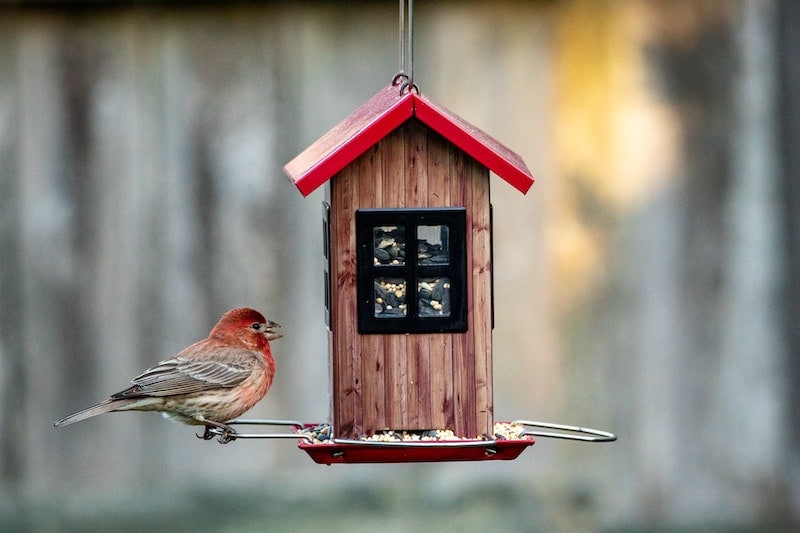
The morning calls of birds are beautiful sounds to wake up to, while the daytime appearance of birds in your yards is a great way to add a flash of color to your surroundings. You might have even built a hanging bird house to attract finches, sparrows, and other backyard birds.
But how good of a job does a hanging bird house do? Do birds like hanging bird houses? Well, there’s no single answer.
It depends on the species. While some birds quickly adapt to and take advantage of hanging bird houses, others avoid them altogether. So, let’s learn more about hanging bird houses and whether they attract birds.

Do Hanging Bird Houses Attract Birds?
Some birds are naturally curious and will check out any new object in their environment, including a hanging bird house. Other birds are more suspicious and take longer to warm up to change. The effectiveness of a hanging bird house will depend on the kind of birds commonly found in your region. For example, some species easily attracted to man-made bird houses are bluebirds, purple martins, and swallows.
On the other hand, wrens and woodpeckers are less likely to use a hanging bird house because they prefer to build their nests. Moreover, other factors determine whether a bird will reside in a hanging bird house.
Some of these include the size of the hole, the location, and whether the house has been built to match the specific needs of a particular species.
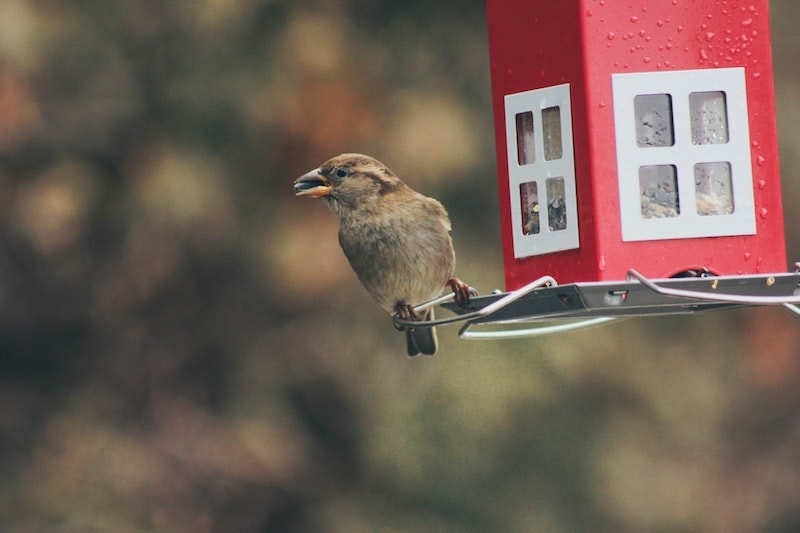
Hole Size
When hanging bird houses, one size does not fit all. The entrance of the bird house should be sized specifically for the type of bird you want to attract.
For example, a tiny hole is perfect for attracting sparrows, while a larger hole is better for bluebirds. If the hole is too tiny, birds won’t be able to get inside, and if it’s too big, predators will have an easy time following a bird into the bird house.
Location
Where have you hung the bird house in your yard? Is it in a shady spot or an open area? The location of the bird house will determine if it gets any visitors because different birds prefer different habitats.
While some species thrive in densely wooded areas, others prefer more open spaces. Again, you’ll have to check the kind of birds common in your area to decide where you want to hang the bird house.
Let’s say the backyards in your area get a lot of finches. It’s a well-known fact that finches like to reside in bird houses. So, the ideal location to place a bird house to attract finches is on your porch. It will keep the finches safe from predators and provide them a place to nest. Finches typically like bird houses with U-shaped or circular openings. Plus, the entry hole size should be 2 inches or more. Finally, they’ll fill the bird house with natural nesting materials they collect from their surroundings.
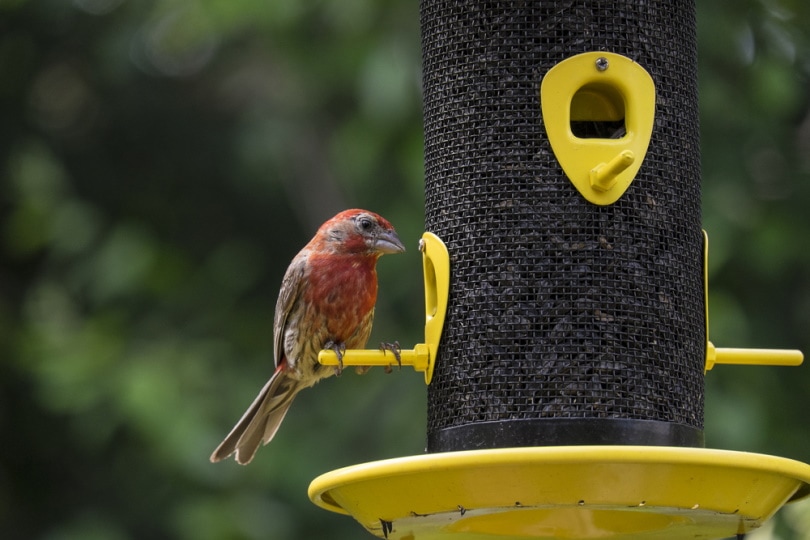

Benefits of a Hanging Bird House
A hanging bird house has many benefits for the birds. Some of them include:
Protection Against Predators
Most birds are small and have few defenses against predators. A hanging bird house can give them a place to roost and nest safely out of reach of land-based predators.
Since the bird house is hung high up, it is out of reach for many predators, such as possums, snakes, and raccoons. As a result, many birds prefer living in hanging bird houses to increase their chances of survival.

Shelter From the Harsh Weather
A strong storm or rain can quickly sweep away birds’ nests on the ground. However, hanging bird houses offer protection from the harsh weather as they are suspended in the air.
The bird house will also keep the eggs and chicks warm during cold weather since it is usually located close to the tree trunk. The added warmth is especially beneficial for small birds that cannot generate enough body heat to keep their eggs warm.
Aesthetically Pleasing
This one is for humans. Imagine the beauty of seeing a colorful bird flying into its hanging home. It’s a sight to behold.
Hanging bird houses are aesthetically pleasing and add character to your yard or garden. They are also great conversation starters when you have guests over.
How to Hang a Bird House in Your Yard
If you want to attract birds to your yard, one of the best things you can do is to hang a bird house. Here’s how to get started:
1. Choose the Right Place
When choosing the best place to hang a bird house, ensure it’s far away from a bird bath or feeder. While it might seem like a good idea to give birds all amenities in the same place, the presence of so many things close together increases the risk of predators.
You should keep the bird house at least 6–7 feet away from the bird feeder or bath. Keep the distance longer if there’s more space in your yard or porch.
Secondly, the area you choose to hang the bird feeder should not get too much human traffic unless you want to scare the little ones away. Most birds prefer lower-traffic areas where they can build their nests and raise their young ones.
While this is a good approach, it’s not exactly a hard-and-fast rule. For example, if you want to attract bluebirds or purple martins, you don’t necessarily have to hang the bird house in a low-traffic area since these species do not mind exposure.
But then again, most species do. So, if you’re planning to attract a wide variety of birds, it’s best to hang the bird house away from a door or a shed in your everyday use.
Likewise, if you want to hang multiple bird houses, space them apart. Most birds like to keep their nests far apart from their fellows.
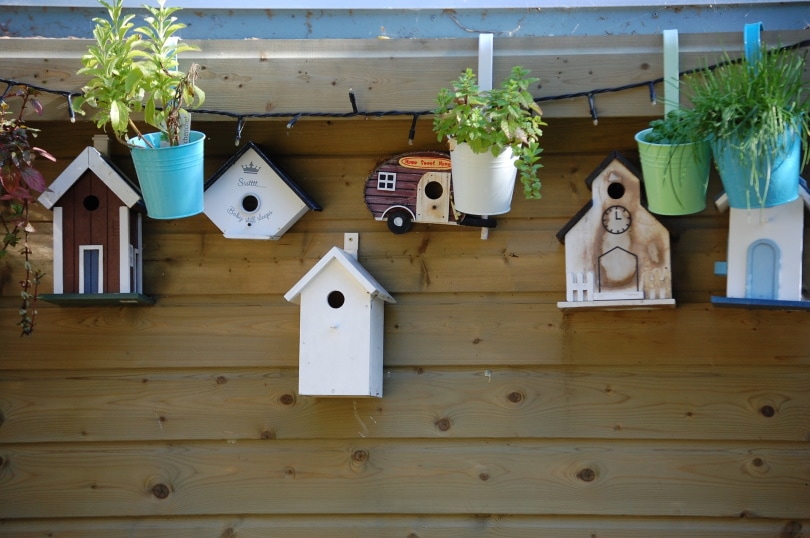
2. Hoist the Bird House
Once you’ve selected the best place, go ahead and hang the bird house. Make sure the entry hole is in the opposite direction to the prevailing winds. In the US, this would be towards the east. In most states, it’s opposite to the direction of strong sunlight and winds.
You also need to ensure the bird house is placed at the right height. It should be at least 5 feet above the ground. You can go a bit higher, but don’t go above 12 feet.
You can adjust the height based on the types of birds you want to attract. For example, if you’re going to make your yard a nesting place for bluebirds, hang the bird house 6 feet from the ground. But if you’re a wren or chickadee fan, keep the height at 5 feet. Meanwhile, go higher—up to 10 feet—for purple martins.
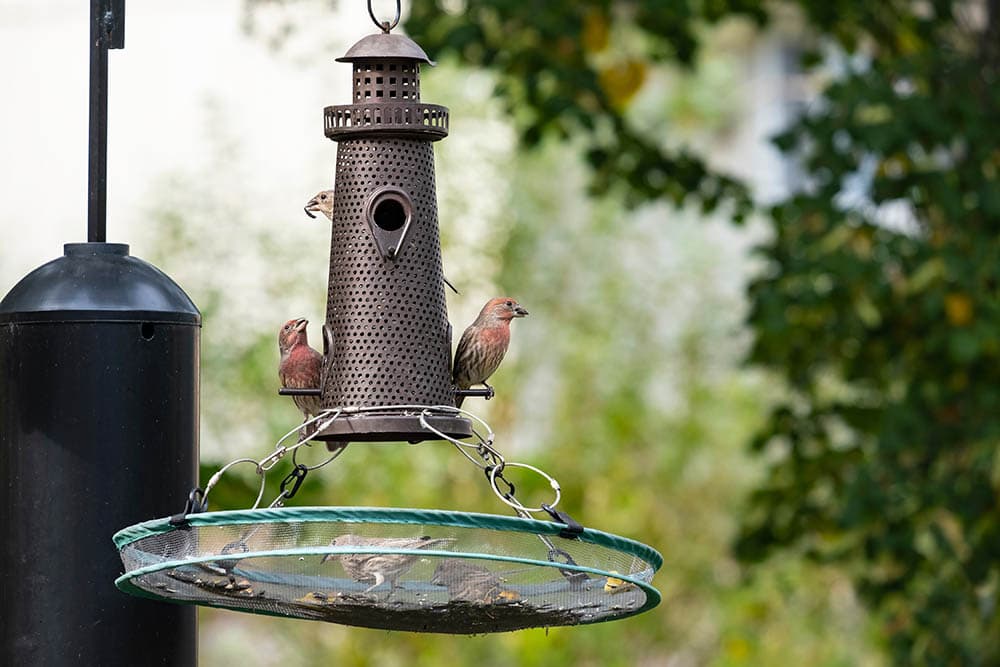
3. Secure It in Place
The way you hoist the bird house also matters. You need to ensure it’s properly secured, so it doesn’t swing or sway in the wind. The last thing you want is for the bird house to collapse and injure nesting birds or their young ones. You can use sturdy wire, rope, or twine to secure the bird house in place. Just make sure the material you use can withstand bad weather. You should also avoid using plastic or any other material that can degrade over time.
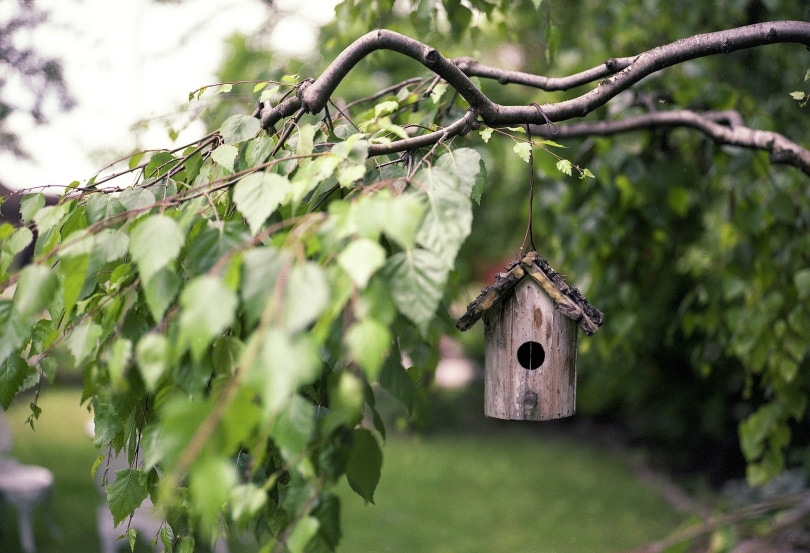

Tips for Mounting Bird Houses
Here are some tips to ensure the hanging bird house you’ve so lovingly mounted stays in place and provides a safe place for your favorite birds.
- Use proper mounting equipment. This means using screws and nails that are the appropriate size and type for the material you’re attaching them to.
- Keep nesting materials nearby. Many birds will build their nests using materials they find close to the bird house. By keeping a stash of sticks, leaves, and other potential nesting materials nearby, you’re likely to entice birds to make your bird house their home.
- Check the house regularly. Once every few days, take a peek inside the bird house to ensure everything looks alright. You should also check the bird house after a storm or heavy rain. If you see signs of damage, take the house down and repair it before putting it back up.
- Be patient. It can take some time for birds to discover your bird house and decide to make it their home. Don’t get discouraged if you don’t see any activity immediately. Give them some time to look for their desired real estate.

Conclusion
The verdict is out: different bird species have different needs. While some of them may consider a hanging bird house their abode, others might not be too ecstatic about the idea of living in a hanging house.
Either way, you should do some research to find out if your area gets birds that prefer living in hanging bird houses.
Featured Image Credit: Joshua J Cotten, Unsplash
About the Author Jeff Weishaupt
Jeff is a tech professional by day, writer, and amateur photographer by night. He's had the privilege of leading software teams for startups to the Fortune 100 over the past two decades. He currently works in the data privacy space. Jeff's amateur photography interests started in 2008 when he got his first DSLR camera, the Canon Rebel. Since then, he's taken tens of thousands of photos. His favorite handheld camera these days is his Google Pixel 6 XL. He loves taking photos of nature and his kids. In 2016, he bought his first drone, the Mavic Pro. Taking photos from the air is an amazing perspective, and he loves to take his drone while traveling.
Related Articles:
10 Types of Hummingbirds in Arkansas (With Pictures)
8 Types of Hummingbirds in Nebraska (With Pictures)
5 Types of Hummingbirds in Idaho (With Pictures)
3 Types of Hummingbirds in Mississippi (With Pictures)
8 Types of Hummingbirds in Kansas (With Pictures)
5 Types of Hummingbirds in West Virginia (With Pictures)
5 Types of Hummingbirds in Ohio (With Pictures)
Where Do Nuthatches Nest? Nuthatch Nesting Habits Explained
